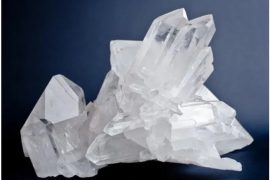Are you intrigued by the captivating realm of quartz crystals? You’ve come to the right place! This blog post delves into the alluring world of synthetic quartz crystals. Discover their astounding qualities and extraordinary uses as we provide all the information you need. Whether you’re a crystal aficionado or have a thirst for learning about science and technology, prepare to be astounded by the wonders of these artificially created gems. Get ready for an enthralling adventure through the enchanting and versatile world of synthetic quartz crystals.
What Are Synthetic Quartz Crystals?
Synthetic quartz crystals are meticulously engineered gemstones designed to replicate both the chemical composition and crystal structure of natural quartz. These crystals are meticulously crafted within controlled laboratory environments, utilizing advanced techniques that closely imitate the geological processes seen in nature. This differs significantly from natural quartz, which takes millions of years to form, while synthetic quartz crystals can be produced in a mere matter of weeks or months.
This accelerated production grants meticulous control over factors like their dimensions, shapes, and levels of purity. The production process involves initiating with a seed crystal, composed of pure silicon dioxide, and positioning it within a high-temperature hydrothermal chamber filled with a silica solution. The application of heat and pressure induces the gradual development of new layers of silicon dioxide molecules around the seed crystal, culminating in the creation of a fully developed synthetic quartz crystal.
These artificially grown crystals are celebrated for their exceptional clarity and brilliance, often surpassing their natural quartz counterparts. They are available in an array of colors, endowing them with endless creative potential for jewelry designers. Due to their versatility and aesthetic appeal, synthetic quartz crystals have established themselves as a favored choice among jewelry makers, offering a multitude of possibilities for crafting exquisite jewelry pieces. This distinctiveness has firmly positioned them as a noteworthy option in the realm of gemstones and jewelry.
How Are They Made?
Creating synthetic quartz crystals is a precise and advanced process that mimics natural quartz formation. It involves the following steps:
- Select high-purity silica sand as the primary raw material and purify it to remove impurities.
- Combine the purified silica sand with dopants to determine the crystal’s properties.
- Place the mixture in specialized equipment with controlled environments, using heat and pressure to facilitate crystal growth.
- Tiny seed crystals form and act as templates for further growth.
- More layers of crystalline material deposit onto the seeds until fully grown synthetic quartz crystals emerge.
- The grown crystals undergo cutting and polishing to achieve desired shapes and sizes for various applications.
Throughout the process, meticulous attention to detail and strict quality control measures are essential to ensure consistent production of high-quality synthetic quartz crystals.
Properties and Characteristics of Synthetic Quartz Crystals
Many industries use synthetic quartz crystals because of their unique properties and characteristics.
- Durability and Strength
The durability and strength of synthetic quartz crystals are standout characteristics that enhance their value across diverse applications. These engineered gemstones are purpose-built to endure the test of time, ensuring their longevity in various uses. Their resilience is a direct result of their superior composition, enabling them to persist through everyday wear and tear while maintaining their sheen and structural soundness.
With remarkable strength, they exhibit remarkable resistance to scratches, chips, and fractures, rendering them exceptionally well-suited for integration in both jewelry and electronic devices. Moreover, synthetic quartz crystals can withstand elevated temperatures and pressures, retaining their structural integrity even in industrial applications marked by extreme conditions. This fusion of durability and strength establishes synthetic quartz crystals as a dependable choice across a broad spectrum of applications, from the crafting of exquisite jewelry to the provision of robust components for electronic devices.
- Clarity and Color Variations
synthetic quartz crystals are remarkable for their clarity and color variations. These lab-grown crystals offer transparency and purity comparable to their natural counterparts. Advanced manufacturing techniques ensure precise control over their clarity, resulting in consistent levels of transparency across different pieces, making them versatile for various applications.
Beyond their clarity, synthetic quartz crystals are available in a wide range of colors, from vibrant blues and pinks to clear or smoky quartz. This diverse color palette offers endless possibilities for incorporating these gems into jewelry designs or decorative items, catering to different tastes and design aesthetics. Choosing synthetic quartz crystals provides greater control over color consistency throughout your project, eliminating concerns about mismatched stones.
Whether you’re seeking captivating clarity or a specific color, these man-made gems offer versatility for creating visually stunning effects in your creative endeavors.
- Versatility in Applications
Synthetic quartz crystals are versatile materials with diverse applications. They are commonly used in electronics, serving as oscillators and resonators in devices like watches, radios, and smartphones, ensuring precise timekeeping and signal transmission. In the field of optics, their exceptional clarity enables the creation of high-quality lenses for cameras, microscopes, telescopes, and fiber optic cables for efficient data transmission.
These crystals are also employed in architecture and interior design, where they are transformed into elegant countertops, tiles, and decorative pieces, available in various colors to enhance aesthetics. In scientific research laboratories, synthetic quartz’s thermal stability facilitates experiments under extreme conditions. Additionally, its resistance to chemicals and abrasion makes it valuable in manufacturing processes, including the production of corrosion-resistant equipment like chemical reactors and semiconductor fabrication tools.
Synthetic quartz crystals offer a wide range of possibilities, from technology-driven applications to enhancing the beauty and precision in various industries and settings.
Benefits of Using Synthetic Quartz Crystals
The benefits of synthetic quartz crystals make them a popular choice in a wide variety of industries.
Affordability
Synthetic quartz crystals offer affordability as a key advantage. They are much more budget-friendly compared to natural quartz crystals, thanks to their laboratory manufacturing process that minimizes mining and extraction costs. Abundant raw materials for synthesis contribute to keeping prices low, making synthetic quartz accessible to a wider range of consumers.
Despite their affordability, synthetic quartz crystals maintain impressive quality and durability, possessing similar properties to natural quartz but at a fraction of the price. This makes them an attractive option for individuals and businesses seeking to incorporate these crystals into jewelry, decor, or products without straining their budgets. The cost-effectiveness of synthetic quartz also benefits businesses using them in larger quantities, reducing production costs for items such as watches, electronics, and industrial applications.
In summary, affordability is a significant advantage of synthetic quartz crystals, allowing more people and businesses to enjoy their beauty and benefits without overspending.
Eco-Friendly Option
Synthetic quartz crystals are an eco-friendly choice, offering a sustainable alternative to natural quartz. They are created in controlled laboratory settings, reducing the environmental impact associated with mining and extraction. This eco-conscious approach minimizes resource depletion and the disruption of ecosystems, making synthetic quartz a greener option.
Additionally, the production of synthetic quartz crystals emphasizes sustainable methods, including material recycling and waste reduction. These practices help lower carbon emissions and conserve energy resources, further contributing to environmental preservation. Despite their sustainable origins, synthetic quartz crystals maintain quality and durability similar to their natural counterparts, ensuring long-lasting beauty and performance.
If you seek a beautiful, eco-friendly option that aligns with your environmental values, consider integrating synthetic quartz crystals into your designs or projects. These lab-grown gems demonstrate that sustainability can coexist with style and functionality.
Consistency in Quality
One of the primary advantages of using synthetic quartz crystals is the consistent quality they provide. Unlike natural quartz crystals, which can vary in clarity, color, and appearance, synthetic quartz crystals are manufactured to precise standards. During the production of synthetic quartz crystals, strict control over factors like temperature, pressure, and chemical composition ensures uniformity in each crystal.
This results in all pieces having the same clarity and color saturation, making them ideal for applications where uniformity is important, such as electronics or jewelry making. This consistency offers a more predictable and user-friendly experience for various applications. It also enhances the satisfaction of consumers, who can expect a consistently high standard when purchasing synthetic quartz crystal products, regardless of the batch or piece. The reliability of quality sets synthetic quartz crystals apart from their natural counterparts, ensuring that each crystal consistently meets expectations.
Popular Uses of Synthetic Quartz Crystals
Synthetic quartz crystals are versatile and cost-effective, finding applications in various industries:
- Electronics Industry: They are crucial for electronic components like oscillators, filters, sensors, and resonators, ensuring precise timekeeping in devices like watches and clocks.
- Optics Industry: Their transparency and high refractive index make them ideal for lenses in cameras, microscopes, and laser technology used in medical equipment and research.
- Jewelry Making: Affordable alternatives to natural gemstones, synthetic quartz crystals are used to create stunning, durable gemstones with brilliant clarity.
- Industrial Applications: Their exceptional hardness makes them valuable in industrial settings for grinding, cutting tools, sandblasting media, and precision polishing agents.
- Metaphysical Uses: Many believe in the healing properties and spiritual benefits of synthetic quartz crystals, which enhance positive energy flow.
In summary, synthetic quartz crystals are a modern marvel, offering durability, versatility, and affordability for various purposes. From advancing technology to adding sparkle to jewelry collections, these crystals have a place in a wide range of applications. Embrace the world of synthetic quartz and explore its many possibilities!



